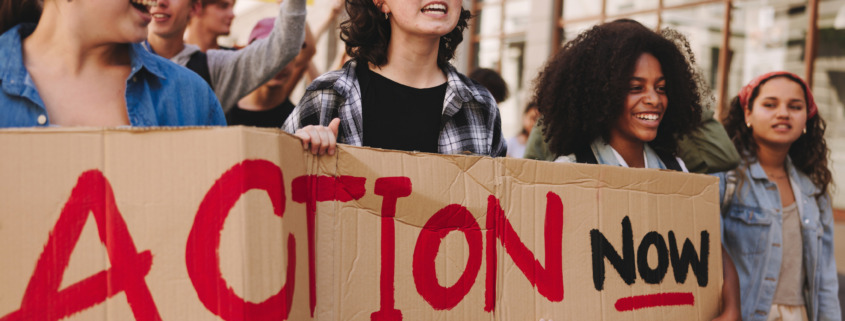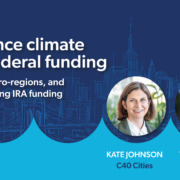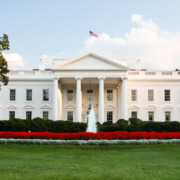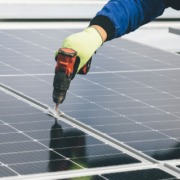How local governments can pull the emergency brake, and take climate action now
2023 has been a record-breaking year for our planet, with sea and land surface temperatures at all time highs, we are edging dangerously close to the 1.5°C limit set out by the Paris Climate Accords.
With Inflation Reduction Act funding, local governments in the US have the means to pull on the emergency brake and take quick, decisive action to cut emissions.
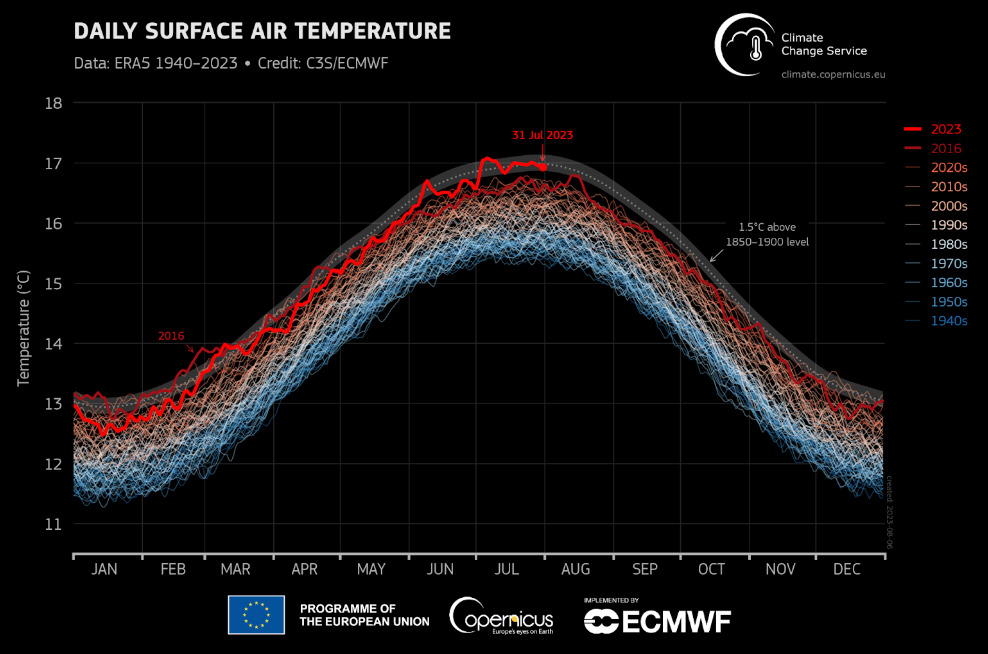
Global daily surface air temperature from January 1, 1940 to July 31, 2023, plotted by year. All years are plotted with the corresponding color for the decade, except for 2016 and 2023, which are red. The dotted gray line depicts the 1.5C limit set out by the Paris Climate Accord. Visualization by The Copernicus Climate Change Service and the European Centre for Medium-Range Weather Forecasts.
What does pulling the emergency brake look like?
For governments that don’t yet have a climate action plan, it means flipping the traditional playbook. We already know what the major drivers of emissions reductions are. Rather than waiting for the plan to act, we need to act while we plan.
Recipients of the Climate Pollution Reduction Grant funding announced by the Environmental Protection Agency (EPA) this summer, will have an opportunity to put this flipped playbook in action as they start rolling out Priority Climate Action Plans (PCAP) in the coming months. These plans are designed to highlight key priorities, while leaving more of the detailed analysis for a Comprehensive Climate Action Plan on a longer timeline. In light of the expedited process, how can governments make sure they’re acting smart, while acting fast?
Acting quickly doesn’t mean acting hastily.
Based on our work with over 100 municipalities, here are three project elements we recommend for the planning effort:
- Convene a task force: Having key interested and affected parties, and industry and subject matter experts in the same room ensures efficient and effective information exchange in determining the feasibility of policy implementation. Our work with the Climate Action Task Force in Oregon facilitated agreement on ambitious targets through robust expert debate.
- Use trusted and available data effectively: Most local governments already have comprehensive greenhouse gas inventories which, coupled with publicly available data from the EPA, can provide a great starting point for determining priority actions. Data dashboards, such as those we created with RMI, help decision makers visualize the emission reductions potential of policies.
- Conduct meaningful public engagement: If not thoughtfully implemented, climate actions can pose a burden on equity-denied communities. These communities can instead benefit from emission reduction initiatives through increased climate resilience, improved access to services and amenities, and decreased energy costs. Working with local organizations and networks is important for reaching and hearing from all communities to develop plans and actions that can hit the ground running.
Doing while planning
We already have an understanding of what’s required for communities to get to net zero. While the planning effort is underway, there are lots of actions we know need to be taken everywhere–cities and regions can get going on these actions as the climate action plan is being made. A plan lays out goals, timelines, and other details, but governments don’t need to wait for that information to start tackling what are known to be the largest sources of emissions in North American cities: fossil fuel use in buildings and for transportation. To tackle these emissions, we know that we have to retrofit the majority of existing buildings, create net-zero building codes, and shift car trips to transit and active transportation modes. Other examples of ‘doing while planning’ include:
- Establishing bylaws for high energy efficiency requirements in new buildings
- Setting up a Property Assessed Clean Energy (PACE) financing program for building energy efficiency retrofits
- Creating incentive programs for EV charging station installations, heat pump installations, home renewable energy systems, and home retrofits
- Retrofitting city facilities to high energy efficiency standards
- Partnering with businesses and institutions to retrofit their facilities for high energy efficiency and renewable energy production and use
- Investing in new active transportation infrastructure like bike lanes, sidewalks, and trails
- Offering increased transit service routes and frequency
- Partnering with utilities or energy co-operatives to create new renewable energy installations
- Starting the municipal fleet transition to zero emission vehicles
- Directing new development to infill projects to create compact, complete communities
- Increasing waste diversion from landfills, especially organic materials
- Creating an urban forestry strategy and start planting trees
Community engagement is critical
The biggest risk of quick action is losing sight of local needs and implementing climate actions with unintended inequitable outcomes. PCAPs reduce these risks by requiring meaningful public engagement that informs actions and policies. Working with local organizations and networks is an effective approach to reaching and hearing from communities. Equity-denied communities are vulnerable to missing out on the numerous benefits of greenhouse gas reduction initiatives including increased climate resilience, improved access to services and amenities, and decreased energy costs from energy efficiency improvements.

